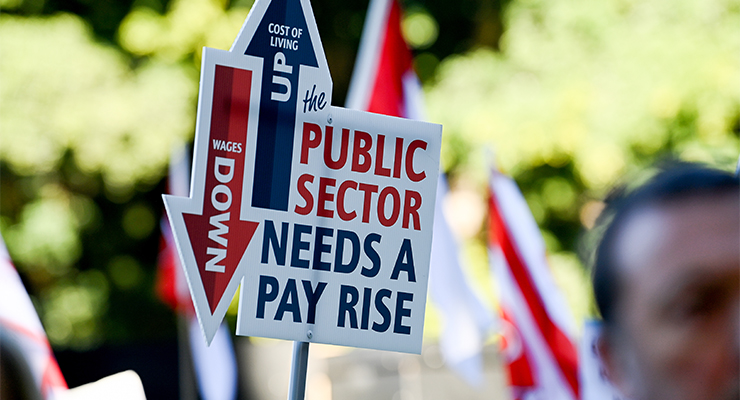
A quarter of NSW public sector workers have considered moving interstate in search of better wages, a new union survey shows. The survey, from Unions NSW, is part of a campaign aimed at busting the state government’s 3% cap on wage increases for public sector employees. Inflation is predicted to hit 7.75% before the end of the year.
But where would a public servant seeking better opportunities go?
The obvious answer seems to be Queensland where, lately, total hourly rates of pay for public employees have increased the most. The latest ABS data, from the second quarter of this year, show total hourly rates of pay for public sector workers increased by 4%, compared with the corresponding quarter the previous year.
In NSW that increase was just 2.1%. Tasmania with 2.6% and the ACT with 2.8% also beat NSW. Victoria fell behind NSW with an increase of 2%. Western Australia had an increase of 1.1%, the Northern Territory of 1.4%, and South Australia of 1.7%.
University of Queensland Associate Professor in management and business Martin Edwards said data show that people were leaving NSW and Victoria for the Sunshine State. The data he pointed to was not specific to public sector workers, but it “made a lot of sense” that those workers would be among those making the move.
“There’s actually quite a bit of evidence that there has been a big labour flow into Queensland over the last year or two, and it’s potentially linked to the ease at which people can work from home now,” he said.
The latest ABS figures on interstate migration, from March last year, show Queensland gained the most people, with 7000 newcomers. That’s not far off the total number of people who left NSW and Victoria in the same period: 4500 and 4900, respectively.
“If public sector wage increases are not keeping up with inflation, which is potentially what’s happening regardless of what state you’re in, people’s disposable income is squeezed. And it makes sense to look at whether different states have a better standard of living,” Edwards said.
“Also, we are in a context where job vacancy levels are at record high levels, and therefore people have an opportunity to change jobs.”
Indeed, Queensland was the top destination named by Unions NSW survey respondents who said they were considering a cost-of-living-inspired move. Of those people, 54% had Queensland in mind.








Queensland doesn’t need them and doesn’t want them.
The public sector intra (local govt.)/interstate, depending upon which department or portfolio with an individual’s skills and experience, will have increasing opportunities due to working age decline and early retirement schemes.
Anecdotally one is aware of a young baby boomer &/or older Gen X cohort in the Federal PS in Melbourne who could have retired years ago, but were asked/offered to come back after 6 months ‘official’ retirement (even though most had no financial need).
There are a few underlying dynamics, i.e. blocking up promotion opportunities for younger (many at the same Dept. are employed as casual &/or via work agencies), of those remaining beyond retirement they have difficulty occupying themselves outside of work, and demographic decline; OECD charts below show how Australia like the developed, now some developing world, have passed the ‘demographic sweet spot‘.
https://data.oecd.org/chart/6Qex
Queensland has traditionally leaked a few Victorians – a lot were actually coming back pre Covid.
With the horrendous flooding up North and subtropical forests now becoming occasional tinder boxes, I am surprised that the leaking continues, according to this report.
In respect of NSW, Sydney continues to be drenched and Lismore residents continue to repeatedly suffer tragedy.
For a small percentage salary increase (and weak unions maybe?) it’s a bit of a risk to expend all the costs of a interstate relocation to enjoy all that humidity.
Yes I agree John. Perhaps they could also spend the winter months in Tasmania instead of Queensland.
Now is the mexican free period – Post school holidays and pre Christmas holidays. Great place to be!!!!
As a resident of northern rivers nsw, I’m seriously considering moving to qld to retire. Aside of seriously down-pricing without the need to downsize, it’s much less of a nanny state. Wife and I can buy electric scooters or e-motorbikes or build that 6x4m gazebo without permission. I’m so pissed off down the beach with the council signs with all the things you can’t do. You wonder if they’ve ever travelled OS.